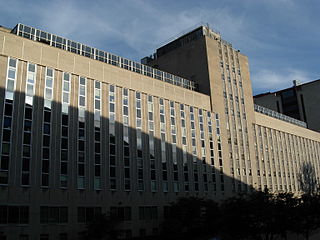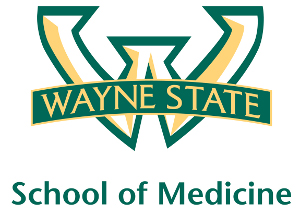The University of Texas Southwestern Medical Center is a public academic health science center in Dallas, Texas. With approximately 13,568 employees and 2,445 faculty and over 2.7 million outpatient visits per year, UT Southwestern is the largest medical school in the University of Texas System and state of Texas.

Scripps Research, previously known as The Scripps Research Institute (TSRI), is a nonprofit American medical research facility that focuses on research and education in the biomedical sciences. Headquartered in La Jolla, California with a sister facility in Jupiter, Florida, the institute has over 200 laboratories employing 2,400 scientists, technicians, graduate students, and administrative and other staff, making it the largest private, non-profit biomedical research organization in the United States and among the largest in the world.

Carlos José Bustamante is a Peruvian scientist. He is a member of the National Academy of Sciences.

The New York University Grossman School of Medicine is the medical school of New York University. Founded in 1841 as the University Medical College, the NYU School of Medicine is one of the foremost medical schools in the United States, ranking 4th in research according to U.S. News & World Report. As of 2017, it is one of the most selective medical schools in the United States, with an acceptance rate of 1.6%. In 2014, New York University School of Medicine attracted over $304.5 million in external research funding from the National Institutes of Health.

The Weill Cornell Graduate School of Medical Sciences (WCGS) is a graduate college of Cornell University that was founded in 1952 as an academic partnership between two major medical institutions in New York City: the Weill Cornell Medical College and the Sloan Kettering Institute. Cornell is involved in the Tri-Institutional MD-PhD Program with Rockefeller University and the Sloan Kettering Institute; each of these three institutions is part of a large biomedical center extending along York Avenue between 65th and 72nd Streets on the Upper East Side of Manhattan.

The University of Pittsburgh School of Medicine is the medical school of the University of Pittsburgh, located in Pittsburgh, Pennsylvania. The School of Medicine, also known as Pitt Med, is consistently ranked as a "Top Medical School" by U.S. News & World Report in both research and primary care. It is ranked 13th in the category of research and 14th in primary care by U.S. News for 2020, and is separately ranked 17th in the Academic Ranking of World Universities list of best medical schools in the world. The school encompasses both a medical program, offering the doctor of medicine, and graduate programs, offering doctor of philosophy and master's degrees in several areas of biomedical science, clinical research, medical education, and medical informatics.

The Wayne State University School of Medicine (WSUSOM) currently hosts an enrollment of more than 1,500 medical students in undergraduate medical education, master's degree, Ph.D., and M.D.-Ph.D. programs and courses encompass 14 areas of basic science. WSUSOM traces its roots through four predecessor institutions since its founding in 1868. According to U.S. News ranking, the school ranks 70th nationally in its research activities.
A biomedical scientist is a scientist trained in biology, particularly in the context of medicine. These scientists work to gain knowledge on the main principles of how the human body works and to find new ways to cure or treat disease by developing advanced diagnostic tools or new therapeutic strategies. The research of biomedical scientists is referred to as biomedical research.
The University of Calgary Faculty of Medicine was established in 1967 and renamed the Cumming School of Medicine in 2014. It is one of two medical schools in Alberta and one of 17 in Canada. The Faculty and medical school is linked to the hospitals in Alberta Health Services such as Foothills Medical Centre, Alberta Children's Hospital, Rockyview General Hospital and Chinook Regional Hospital. Trainees in faculty of medicine include 486 medical students (UME), 767 residents (PGME), 190 post doctoral fellows (PDF) and 491 graduate students. It is one of two 3 year medical schools, along with McMaster University Medical School, in Canada. In addition, the University of Calgary Cumming School of Medicine offers an undergraduate Bachelor of Health Sciences degree and a Bachelor of Community Rehabilitation and Disability Studies degree.
The Graduate School of Biomedical Sciences is one of the eight schools that comprise Tufts University. The Graduate School of Biomedical Sciences (GSBS) is located on the university's health sciences campus in the Chinatown district of Boston, Massachusetts. The school was previously named the Sackler School of Graduate Biomedical Sciences but on December 5, 2019, the university announced it was removing the Sackler name from the school, because of the Sacklers' role in the opioid epidemic through their ownership of Purdue Pharma.

Jan T. Vilček is a biomedical scientist, educator, inventor and philanthropist. He is a professor in the department of microbiology at the New York University School of Medicine, and chairman and CEO of The Vilcek Foundation. Vilček, a native of Bratislava, Slovakia, received his M.D. degree from Comenius University Medical School, Bratislava in 1957; and his Ph.D. in Virology from the Institute of Virology, Czechoslovak Academy of Sciences, Bratislava, Czechoslovakia in 1962. In 1964, Vilček, with his wife Marica, defected from Communist Czechoslovakia during a three-day visit to Vienna. In 1965, the Vilčeks immigrated to the United States, and have since lived in New York City. Vilček devoted his scientific career to studies of soluble mediators that regulate the immune system (cytokines), including interferon and tumor necrosis factor (TNF).
The School of Biological Sciences is a School within the Faculty Biology, Medicine and Health at The University of Manchester. Biology at University of Manchester and its precursor institutions has gone through a number of reorganizations, the latest of which was the change from a Faculty of Life Sciences to the current School.

The College of Natural Science (NatSci) at Michigan State University is home to 29 departments and programs in the biological, physical and mathematical sciences.
Several universities have designed interdisciplinary courses with a focus on human biology at the undergraduate level. There is a wide variation in emphasis ranging from business, social studies, public policy, healthcare and pharmaceutical research.
Created in 1985, the University of Maryland Graduate School, Baltimore (UMGSB) represents the combined graduate and research programs at the University of Maryland, Baltimore County and the University of Maryland, Baltimore (UMB), the university system's doctoral research campuses in the Baltimore area.

The Mayo Clinic Graduate School of Biomedical Sciences (MCGSBS), formerly known as Mayo Graduate School (MGS), is one of the schools of higher education within the Mayo Clinic College of Medicine and Science. It offers graduate training in the biomedical sciences with programs for Ph.D., M.D.-Ph.D., and master's degree-seeking students. In addition, Mayo Clinic Graduate School of Biomedical Sciences offers summer undergraduate research fellowships and post-baccalaureate research opportunities.
Institute for Medical Research, Israel-Canada (IMRIC) is a research institute affiliated with the Faculty of Medicine of the Hebrew University of Jerusalem.
Ruth Lehmann is a developmental and cell biologist. She is the Director of the Whitehead Institute for Biomedical Research, succeeding David Page. She previously was affiliated with the New York University School of Medicine, where she was the Director of the Skirball Institute of Biomolecular Medicine, the Laura and Isaac Perlmutter Professor of Cell Biology, and the Chair of the Department of Cell Biology. Her research focuses on germ cells and embryogenesis.
The UCSF Graduate Division is the graduate school of the University of California, San Francisco, and is located in San Francisco. It is recognized as one of the premier biomedical graduate schools in the United States. It offers 19 PhD programs, 11 MS programs, two certificates and a physical therapy program.








